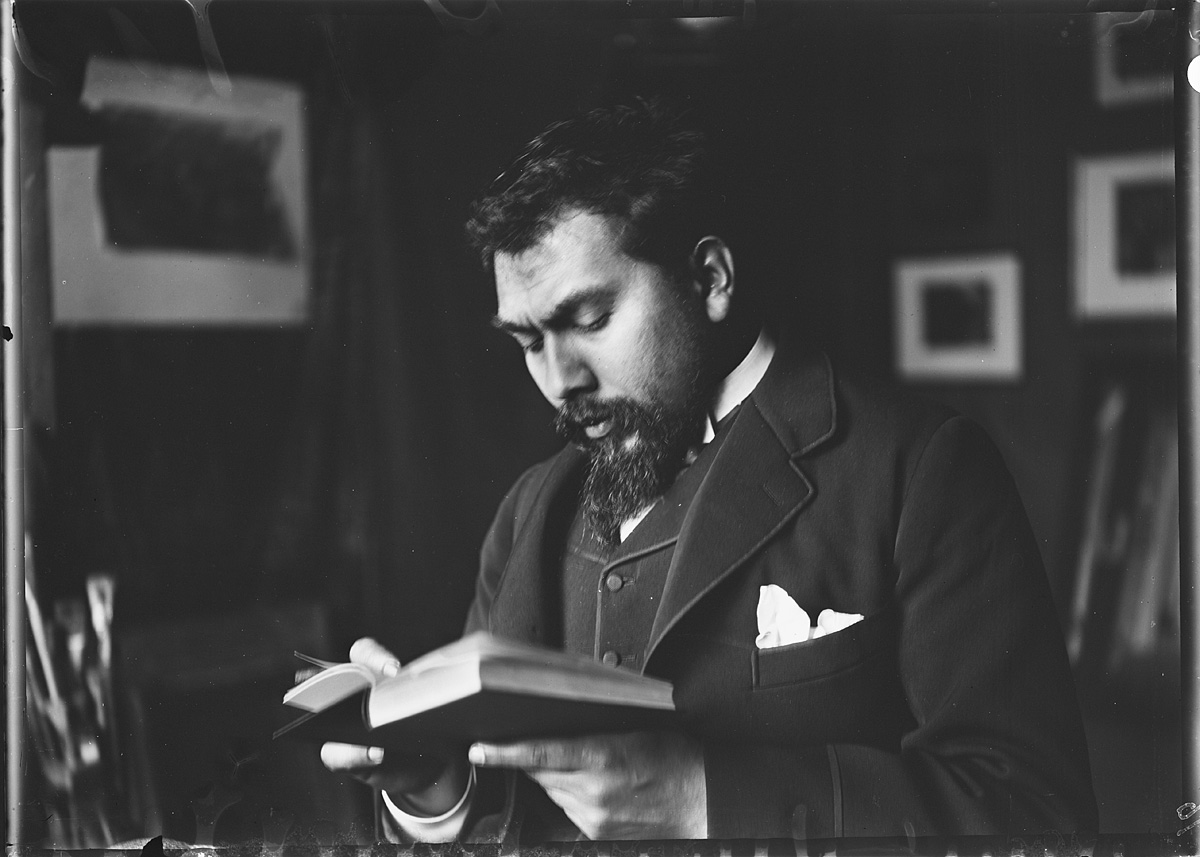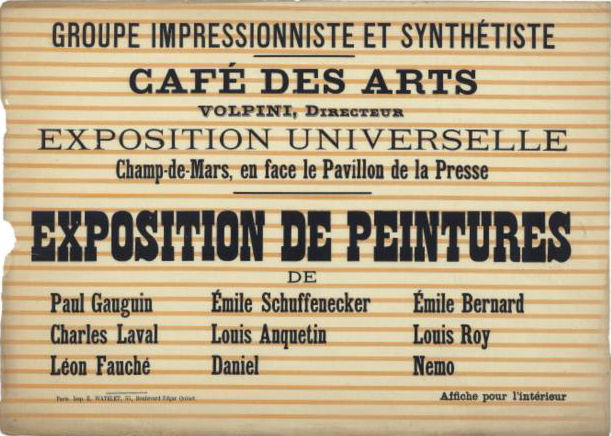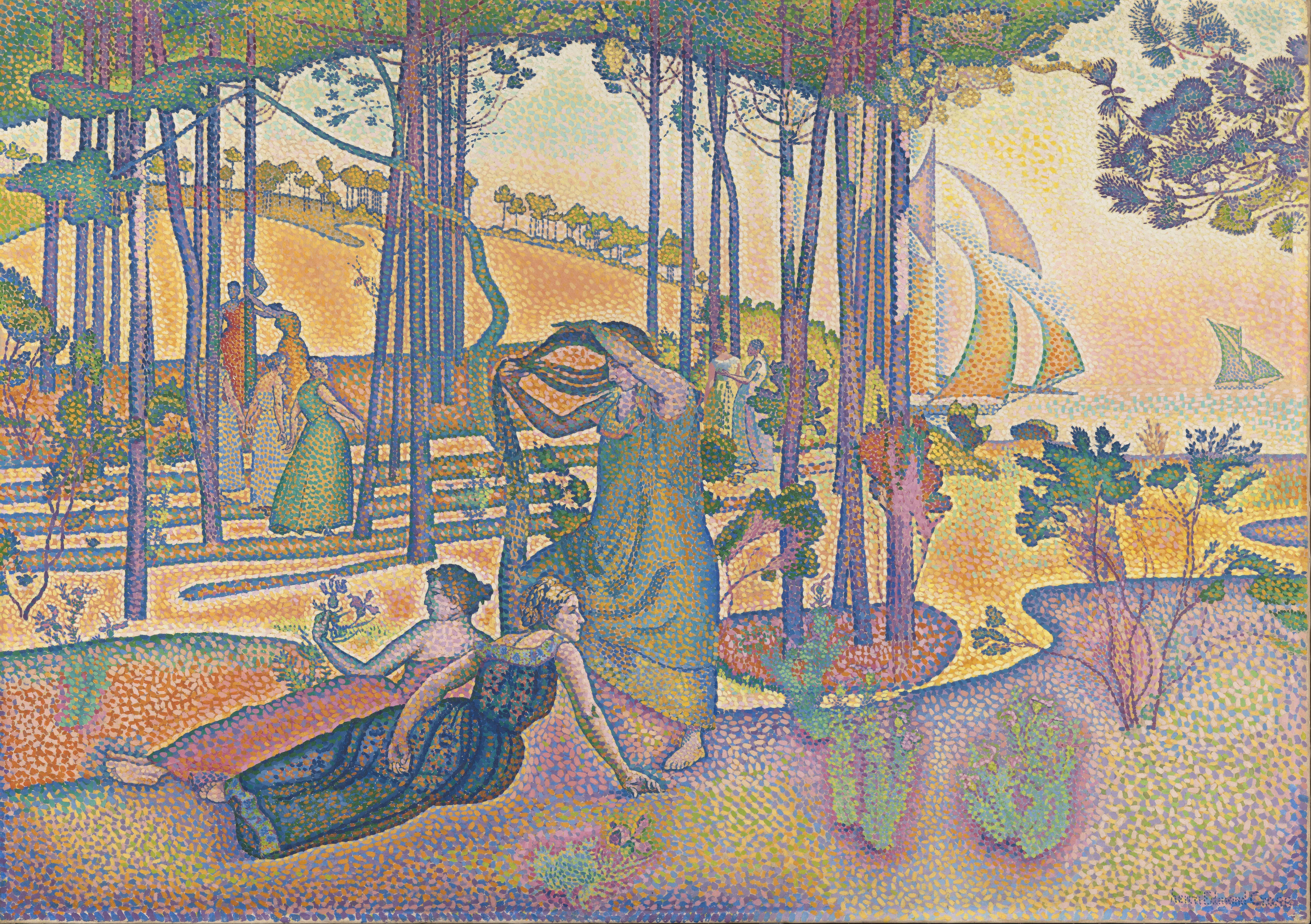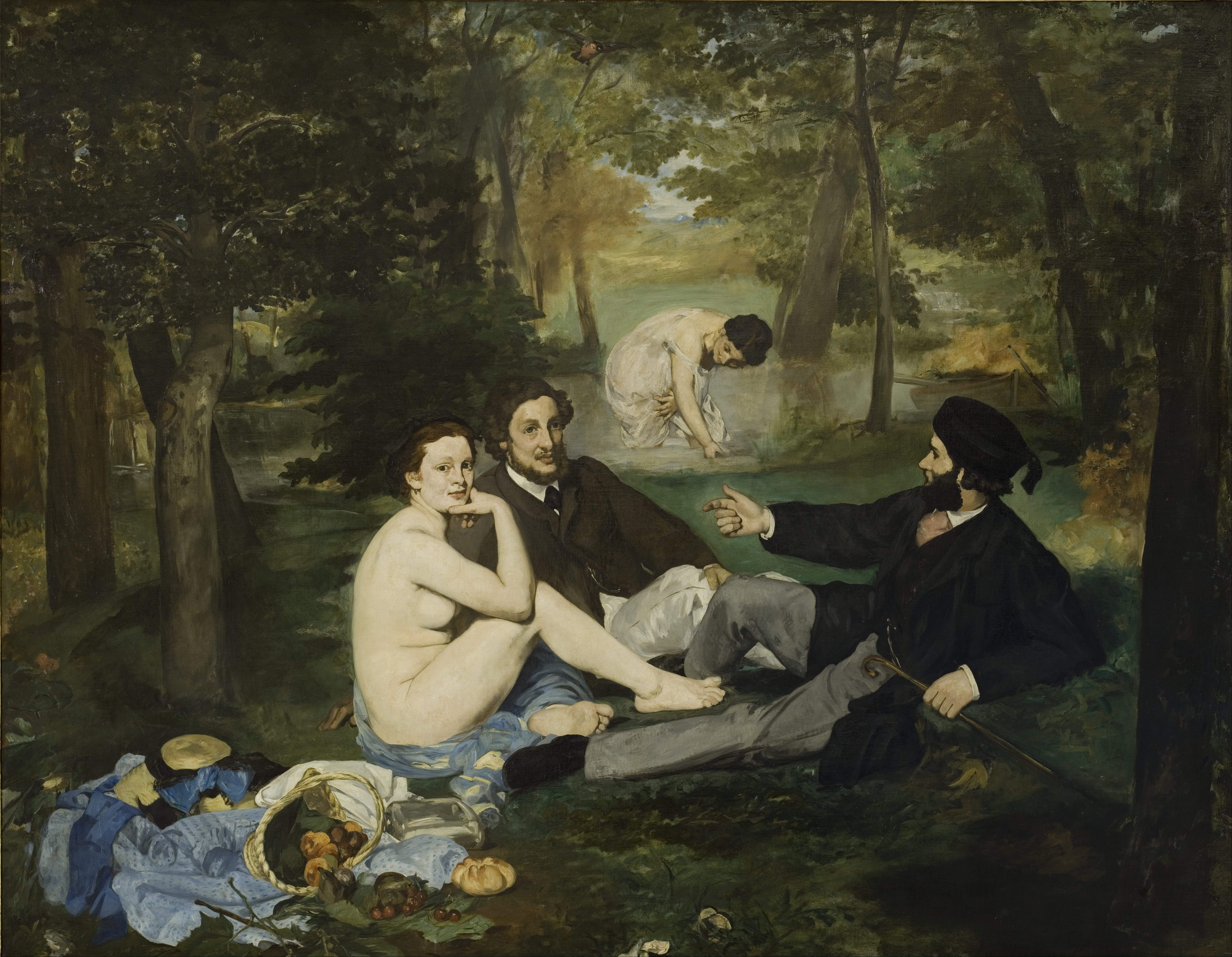|
Jan Toorop
Johannes Theodorus "Jan" TooropJan Toorop Netherlands Institute for Art History, 2014. Retrieved on 18 February 2015. (20 December 1858 – 3 March 1928) was a Dutch painter who worked in various styles, including Symbolism (arts), Symbolism, Art Nouveau, and Pointillism. His early work was influenced by the Amsterdam Impressionism movement. Biography Johannes Theodorus Toorop was born on 20 December 1858 in Purworejo Regency, Purworejo on the island of Java (island), Java in the Dutch East Indies (present-day Indonesia). His father was Christoffel Theodorus Toorop, a civil servant, and his mother was Maria Magdalena Cooke. B. H. Spaanstra-Polak[...More Info...] [...Related Items...] OR: [Wikipedia] [Google] [Baidu] |
Purworejo Regency
Purworejo is a Regencies of Indonesia, regency (; ) in the southern part of Central Java province in Indonesia. It covers an area of 1,081.45 km2 and had a population of 695,427 at the 2010 CensusBiro Pusat Statistik, Jakarta, 2011. and 769,880 at the 2020 Census;Badan Pusat Statistik, Jakarta, 2021. the official estimate as at mid 2024 was 795,033 (comprising 398,135 males and 396,898 females).Badan Pusat Statistik, Jakarta, 28 February 2025, ''Kabupaten Purworejo Dalam Angka 2025'' (Katalog-BPS 1102001.3306) Its capital is the town of Purworejo, Purworejo, Purworejo. History Ancient Mataram Hindu Period (8th–9th century AD) The history of Purworejo is first recorded on Kayu Ara Hiwang inscription on 5 October 901, which is being found in Boro Wetan Village. The area was originally known by the name 'Bagelen' (read /ba·gə·lɛn/) and it is now become a smaller part of the whole Purworejo regency. In the 9th centuries, Bagelen is part of the history of the ancient ... [...More Info...] [...Related Items...] OR: [Wikipedia] [Google] [Baidu] |
Delft
Delft () is a List of cities in the Netherlands by province, city and Municipalities of the Netherlands, municipality in the Provinces of the Netherlands, province of South Holland, Netherlands. It is located between Rotterdam, to the southeast, and The Hague, to the northwest. Together with them, it is a part of both the Rotterdam–The Hague metropolitan area and the Randstad. Delft is a popular tourist destination in the Netherlands, famous for its historical connections with the reigning House of Orange-Nassau, for its Delftware, blue pottery, for being home to the painter Johannes Vermeer, Jan Vermeer, and for hosting Delft University of Technology (TU Delft). Historically, Delft played a highly influential role in the Dutch Golden Age. In terms of science and technology, thanks to the pioneering contributions of Antonie van Leeuwenhoek and Martinus Beijerinck, Delft can be considered to be the birthplace of microbiology. History Early history The city of Delft came int ... [...More Info...] [...Related Items...] OR: [Wikipedia] [Google] [Baidu] |
Marinus Zwart '', a serial in the ''Doctor Who'' TV series
{{disambig ...
Marinus may refer to: *Marinus (crater), a crater on the Moon *Marinus (given name), for people named Marinus *Dr. Marinus, a recurring character in the novels of David Mitchell See also *''The Keys of Marinus ''The Keys of Marinus'' is the fifth serial in the British science fiction television series ''Doctor Who'', which was first broadcast on BBC TV/BBC1 in six weekly parts from 11 April to 16 May 1964. Written by Terry Nation and directed by Joh ... [...More Info...] [...Related Items...] OR: [Wikipedia] [Google] [Baidu] |
Domburg
Domburg is a seaside resort on the North Sea, on the northwest coast of Walcheren in the Dutch province of Zeeland. It is a part of the municipality of Veere, and lies about 11 km northwest of the city of Middelburg, the provincial capital. Demographics In 2010, the town of Domburg had 1,490 inhabitants, up from 1,251 in 2001. The built-up area of the town was 0.78 km2, and contained 881 residences. History The area of Domburg has been inhabited since at least 4,000 BCE. In 1647 after heavy storms on the beach of Domburg a sanctuary was discovered with around 40 stones with Latin inscriptions and carvings of several gods, among them of Neptune (sea) and Mercury (trade), but the majority of a local female deity: Nehalennia who appears to have protected both trade and shipping. According to the inscriptions the stones were erected by tradesmen and captains to fulfil their vows after a safe journey, mentioning explicitly on one stone a merchant of pottery doing business ... [...More Info...] [...Related Items...] OR: [Wikipedia] [Google] [Baidu] |
Katwijk Aan Zee
Katwijk aan Zee (literally, ''Katwijk-on-Sea'') is a seaside resort located on the North Sea at the mouth of the Oude Rijn (Utrecht and South Holland), Oude Rijn. It is situated in the municipality of Katwijk and the province of South Holland. History The Origin till the Golden age of the Netherlands The name "Katwijk" probably has its origins in the name of a Germanic tribe called the Chatti, Chatten (Chatti). The Dutch word "''wijk''" means "area", so the name probably meant something like "the Chatti area". In Roman times, Katwijk was a place of strategic importance. It was located at the Roman Empire's northern border, at the mouth of the Rhine river, which in Roman times was larger in this area than it is today. There was a good deal of traffic along the Rhine. Katwijk was also a jumping-off point for the voyage to Britain. Built during the reign of Claudius, Emperor Claudius (41–54), the town's name was ''Lugudunum Batavorum, Lugudunum''. The town's name was later as ... [...More Info...] [...Related Items...] OR: [Wikipedia] [Google] [Baidu] |
Toorop Dame In Wit (1858–1928), Dutch-Indonesian painter, father of Charley
* Linda Toorop (born 1955), Dutch gymnast
Toorop is a surname of Dutch origin. People with that name include: * Charley Toorop (1891–1955), Dutch painter and lithographer, daughter of Jan * Jan Toorop Johannes Theodorus "Jan" TooropJan Toorop Netherlands Institute for Art History, 2014. Retrieved on 18 February 201 ... See also * {{surname Surnames of Dutch origin ...[...More Info...] [...Related Items...] OR: [Wikipedia] [Google] [Baidu] |
Post-Impressionism
Post-Impressionism (also spelled Postimpressionism) was a predominantly French art movement that developed roughly between 1886 and 1905, from the last Impressionist exhibition to the birth of Fauvism. Post-Impressionism emerged as a reaction against Impressionists' concern for the naturalistic depiction of light and colour. Its broad emphasis on abstract qualities or symbolic content means Post-Impressionism encompasses Les Nabis, Neo-Impressionism, Symbolism, Cloisonnism, the Pont-Aven School, and Synthetism, along with some later Impressionists' work. The movement's principal artists were Paul Cézanne (known as the father of Post-Impressionism), Paul Gauguin, Vincent van Gogh and Georges Seurat. The term Post-Impressionism was first used by art critic Roger Fry in 1906.Peter Morrin, Judith Zilczer, William C. Agee, ''The Advent of Modernism. Post-Impressionism and North American Art, 1900-1918'', High Museum of Art, 1986 Critic Frank Rutter in a review of the Salon ... [...More Info...] [...Related Items...] OR: [Wikipedia] [Google] [Baidu] |
Neo-Impressionism
Neo-Impressionism is a term coined by French art critic Félix Fénéon in 1886 to describe an art movement founded by Georges Seurat. Seurat's most renowned masterpiece, '' A Sunday Afternoon on the Island of La Grande Jatte'', marked the beginning of this movement when it first made its appearance at an exhibition of the Société des Artistes Indépendants (Salon des Indépendants) in Paris. Around this time, the peak of France's modern era emerged and many painters were in search of new methods. Followers of Neo-Impressionism, in particular, were drawn to modern urban scenes as well as landscapes and seashores. Science-based interpretation of lines and colors influenced Neo-Impressionists' characterization of their own contemporary art. The Pointillist and Divisionist techniques are often mentioned in this context, because they were the dominant techniques in the beginning of the Neo-Impressionist movement. Some argue that Neo-Impressionism became the first true avant-garde ... [...More Info...] [...Related Items...] OR: [Wikipedia] [Google] [Baidu] |
Impressionism
Impressionism was a 19th-century art movement characterized by visible brush strokes, open Composition (visual arts), composition, emphasis on accurate depiction of light in its changing qualities (often accentuating the effects of the passage of time), ordinary subject matter, unusual visual angles, and inclusion of movement as a crucial element of human perception and experience. Impressionism originated with a group of Paris-based artists whose independent exhibitions brought them to prominence during the 1870s and 1880s. The Impressionists faced harsh opposition from the conventional art community in France. The name of the style derives from the title of a Claude Monet work, ''Impression, soleil levant'' (''Impression, Sunrise''), which provoked the critic Louis Leroy to coin the term in a Satire, satirical 1874 review of the First Impressionist Exhibition published in the Parisian newspaper ''Le Charivari''. The development of Impressionism in the visual arts was soon foll ... [...More Info...] [...Related Items...] OR: [Wikipedia] [Google] [Baidu] |
Realism (visual Arts)
Realism in the arts is generally the attempt to represent subject-matter truthfully, without artificiality, exaggeration, or speculative or supernatural elements. The term is often used interchangeably with naturalism, although these terms are not necessarily synonymous. Naturalism, as an idea relating to visual representation in Western art, seeks to depict objects with the least possible amount of distortion and is tied to the development of linear perspective and illusionism in Renaissance Europe. Realism, while predicated upon naturalistic representation and a departure from the idealization of earlier academic art, often refers to a specific art historical movement that originated in France in the aftermath of the French Revolution of 1848. With artists like Gustave Courbet capitalizing on the mundane, ugly or sordid, realism was motivated by the renewed interest in the commoner and the rise of leftist politics. The realist painters rejected Romanticism, which had c ... [...More Info...] [...Related Items...] OR: [Wikipedia] [Google] [Baidu] |
James Ensor
James Sidney Edouard, Baron Ensor (13 April 1860 – 19 November 1949) was a Belgian painter and printmaker, an important influence on expressionism and surrealism who lived in Ostend for most of his life. He was associated with the artistic group Les XX. Biography Ensor's father, James Frederic Ensor, born in Brussels to English parents, was a cultivated man who studied engineering in England and Germany. Ensor's mother, Maria Catherina Haegheman, was Belgian. Ensor spent his childhood in a souvenir shop run by his parents. He was fascinated by the carnival masks sold at the shop and these masks would become a source of inspiration in his works. Ensor himself lacked interest in academic study and left school at the age of fifteen to begin his artistic training with two local painters. From 1877 to 1880, he attended the Académie Royale des Beaux-Arts in Brussels, where one of his fellow students was Fernand Khnopff. Ensor first exhibited his work in 1881. From 1880 until ... [...More Info...] [...Related Items...] OR: [Wikipedia] [Google] [Baidu] |
L'Essor (artist Group)
L'Essor (, French) was an association of visual artists in Brussels, active from 1876 to 1891. Its original aim was to rebel against the conservative tendencies of the art institutions and circles in Brussels. History L'Essor came into existence under the name "Cercle des Elèves et Anciens Elèves des Académies des Beaux-Arts de Bruxelles" ("Circle of alumni and students of the Academies of Fine Arts in Brussels") in 1876. Only in November 1879 was the association's name changed to 'L'Essor', a French word meaning 'rising' or 'booming'. The name thus ceased its reference to the academic institutions in Brussels. Its motto was "a unique art, one life", indicating its focus on the unity between Art and Life. The founders were seen as progressives who wished to rebel against bourgeois and conservative literary and artistic circles of Brussels. In reality l'Essor had no real program and would eventually encompass artists from the avant-garde and the more conservative circles. M ... [...More Info...] [...Related Items...] OR: [Wikipedia] [Google] [Baidu] |








